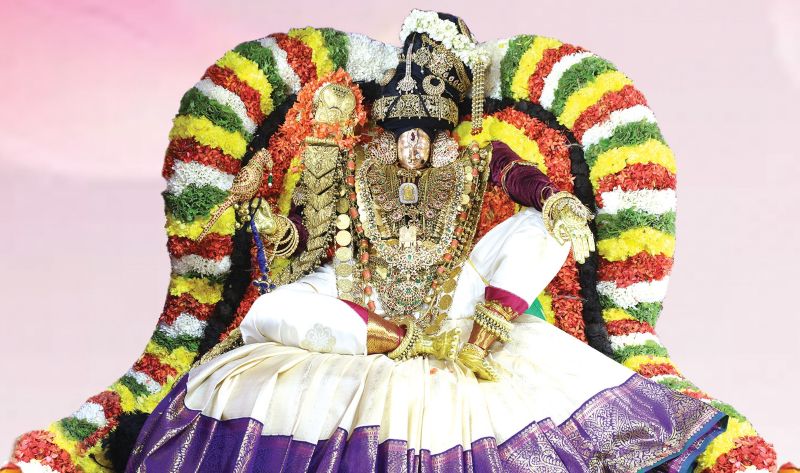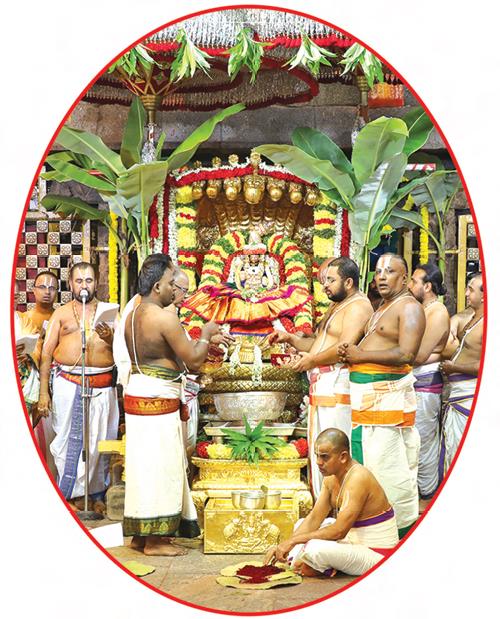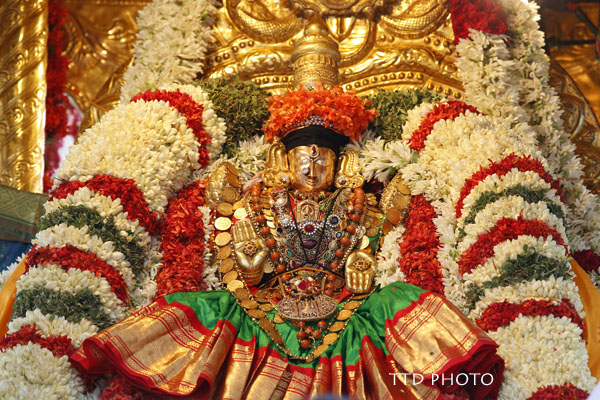Goddess Padmavathi Devi at Tiruchanur The temple town of Tiruchanur located at the base of Tirumala is the abode of Goddess Padmavathi Devi, the divine consort of Lord Srinivasa. To the millions of devotees pouring in from all over the world, the pilgrimage to the Seven Hills begins with the ‘darshan’ of the Devi. Once Read More
Tag: padmavathi devi
Sri Padmavati Ammavaru Brahmotsavams 2024, Tiruchanur – Majestic Festival of Devotion
Sri Padmavati Ammavaru Brahmotsavams 2024 Tiruchanur, the divine domain of Goddess Sri Padmavati Ammavaru, is one of the highly exalted places in Andhra Pradesh. The temple of Sri Padmavati Ammavaru is situated 5 km from Tirupati town and is exclusively dedicated to Sri Padmavati Ammavaru, the consort of Lord Sri Venkateswara. Tiruchanur Sri Padmavathi Ammavari Read More
Laksha Kumkumarchana at Padmavathi Temple – Tiruchanur
This article is about Laksha Kumkumarchana at Padmavathi Temple – Tiruchanur Sri Padmavathi Devi temple – Tiruchanur Goddess Padmavathi is the queen of Lord Srinivasa and enjoys a separate identity with equal status. The Goddess is inseparable and enjoys an equal position as she is a Purushakara or instrumental in protecting the devotees from the Read More
Why Padmavathi is not in Tirumala
Why Padmavathi is not in Tirumala Story Behind The husband, Srinivasa lives up the Seven Hills in ‘Ananda Nilaya’! His wife Alamelu Manga lives in Tiruchanur, down the hills in ‘Shanti Nilaya’! Doesn’t it look queer? There seems to be a special reason for this. Long ago, Padmavathi used to live in ‘Shanti Nilaya’, a Read More



